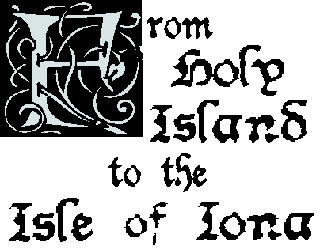
from Holy Island to the Isle of Iona


26 October 2010
The North Atlantic Arc Home
| September | /October/ | November |
| S | M | T | W | T | F | S |
| 27 | 28 | 29 | 30 | 1 | 2 | |
| 3 | 4 | 5 | 6 | 7 | 8 | 9 |
| 10 | 11 | 12 | 13 | 14 | 15 | 16 |
| 17 | 18 | 19 | 20 | 21 | 22 | 23 |
| 24 | 25 | 26 | 27 | 28 | 29 | 30 |
| 31 | 1 |
 |
|
Tuesday 26 October 2010--Columba (521-597 AD) was one of the Twelve Apostles of Ireland, exceptional students of St Finian at Clonard
Abbey in Ireland's County Meath. In about 560, he made a copy of a psalter (a manuscript of the Book of Psalms) belonging to Finian, and
ownership of the copy came into dispute. You might think that monks (and future saints) would find a civilized way to resolve their
differences (Depart from evil, and do good; seek peace, and pursue it--Psalms 29:11), but apparently the argument escalated and
culminated in the bloody Battle of Cķl Dreimhne in 561 (although there is some dispute about this). Needless to say, the authorities were
appalled, and Columba was threatened with excommunication. Instead, he agreed to go into exile as a missionary in Scotland, promising to
convert at least as many souls as had been lost in the battle. With twelve followers of his own, he founded the monastic community on Iona,
bringing Christianity to both Picts and colonizing Gaels, fostering literacy, and establishing himself as a respected diplomat and political
force amongst the local tribes. It seems fair to assume that he'd picked up a few tips on conflict resolution somewhere along the way.
Iona is a small island, three and a half miles long, a mile and half wide. I set out this dismal rainy morning to see as much of it as I can (pleased with myself that, after a dozen years of traipsing around soggy Scotland, I finally thought to bring along a decent pair of rain pants). I first head west, away from the village, toward Camus Cýl an-t-Saimh, the Bay at the Back of the Ocean. There's a golf course over on the west side, the fairways doubling as pasture land for the local cattle, with attendant hazards. The Royal Dornoch it isn't. I pick over the beach a while before turning south, intending to find Columba's Bay, the missionary's presumed landing point, at the southern tip of the island. Just past the reservoir, I lose the trail and turn back, deciding it isn't worth the slog over sodden ground. [Later I check a map and realize that I hadn't far to go...next time.] Back across the golf course and past the B&B, I walk the road into the village, known locally as Baile MÚr, the Big Town. It is, of course, the only town on the island, and it's really difficult to imagine a context in which it would qualify in any way as big. On the way in, I pass the Martyrs Bay Restaurant & Bar, where I had dinner and pints last night. This seems to be a recent addition to the island's amenities. The building's exterior is charmless pebbledash, and the interior is a bit sterile, but maybe it's just not sufficiently lived-in. It's the only pub here, comfortable enough, and I'm grateful for it. Through town, past the ruined nunnery--there's a large group in there just now, I'll come back--to the abbey. Columba's monastery is long gone, of course, done in by repeated Viking raids in the 9th century, but its lasting cultural impact is hard to overstate. The Book of Kells was likely produced here, and the West Highland school of stonecarving originated here. Even after the bulk of the monastic community had retreated to Ireland, Dalriadan and Scottish kings were buried in Reilig “dhrain, the ancient burial ground, including Kenneth mac Alpin and Macbeth. Somerled, Lord of the Isles, built St Oran's Chapel in the twelfth century, and he and three subsequent Lords were interred therein. Somerled's son Reginald invited Benedictine monks to Iona, and it is the monastery they built that we see today. Like most abbeys, it fell into disuse after the Reformation, but 19th-century photographs show the ruin to be in pretty good shape, with no evident collapse or pilfering. The 8th Duke of Argyll, whose family had owned the island for two hundred years, started the process of restoration in 1874, and the reconstruction of the church was undertaken under the ownership of the Iona Cathedral Trust from 1902 to 1910. The remainder of the abbey's rehabilitation was overseen by the Iona Community from 1938 to 1965. The Community was founded in a gritty Glasgow neighborhood by the Reverend George MacLeod, with an ecumenical mission that seems uncontroversial today--serve underprivileged youth, fight for social justice, promote interfaith understanding, etc--but was thought pretty radical back in the day. Care of the abbey has now passed to Historic Scotland (and ownership of the island to the National Trust for Scotland), but the Community continues to use Iona as a retreat and place of pilgrimage. Likely the group I passed on the golf course this morning were Community members. Pilgrimage is nothing new here, of course. In the old days, pilgrims on their way to the abbey had a choice of 357 carved stone crosses to visit along the way. There are but two still standing: MacLean's Cross, along the road to town, and St Martin's Cross, which has stood in its spot in front of the abbey for a thousand years. Most of the rest were destroyed during the Reformation. A museum in the abbey's infirmary houses the fragmentary remains of a few others. Among these are St Oran's Cross, the oldest of Iona's crosses, and St John's Cross. This latter, a replica of which stands out front, was overambitiously large, and collapsed under its own weight not long after erection. It was remounted with circular buttresses supporting the arms. The cross eventually fell again, but the circular support was incorporated into later crosses, and widely copied. Thus was born the Celtic cross we recognize today. The museum also features a variety of other carved stones, particularly grave slabs taken from Reilig “dhrain (there are more in St Oran's Chapel). One peculiar characteristic of the abbey is that it is, for lack of a better term, left-handed--the church is on the south side of the cloisters. Medieval abbeys were built to a fairly standard plan, with the church, the largest building, on the north, so as not to shade the rest of the complex. Every other abbey or priory I've seen has been laid out this way. I'm told that here, the abbey was placed to the south of the burn, so that the living quarters (or more to the point, the latrines) had to be sited on the north side. Walking north from the abbey, I pass by the rocky knoll of Dýn Ő, at 331 feet Iona's highest point. I'll save it for better weather. On the beach at the island's north end, I pick over the wonderfully colorful stones. As amazing as the abbey is, I think this is my favorite spot on the island. Back near the village, I visit the Augustinian nunnery. This was established by Reginald, who made his sister Bethoc the first prioress. It's a lovely ruin, laid out to the standard plan, albeit very much smaller than the abbey. I nap and shower back at the B&B, and then have dinner at the St Columba Hotel--salmon starter, rack of lamb, sticky toffee pudding. Finish with pints at the Martyrs Bay pub, and conversation with some other visitors. Despite the dismal weather, it has been a marvelous day, and a pretty good birthday to boot. Next |
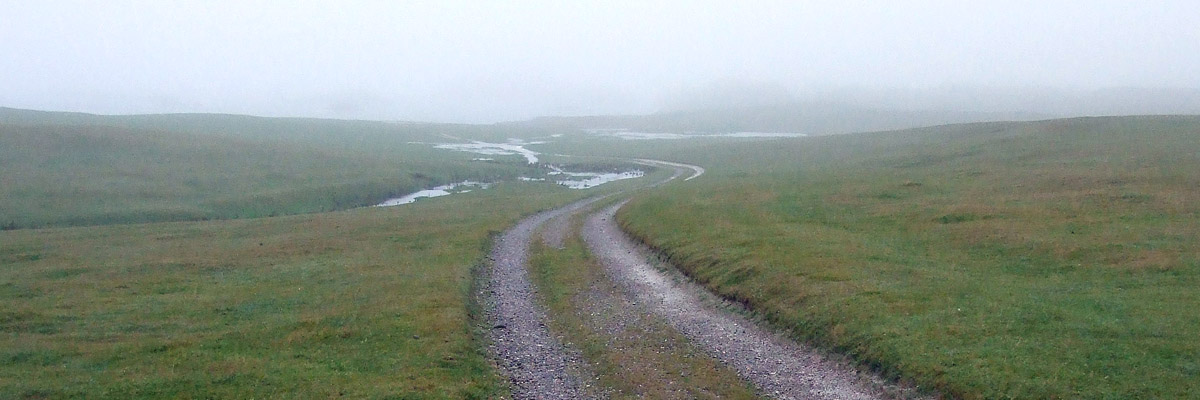 |
Fairway
 |
Bay at the Back of the Ocean
 |
Pilgrims
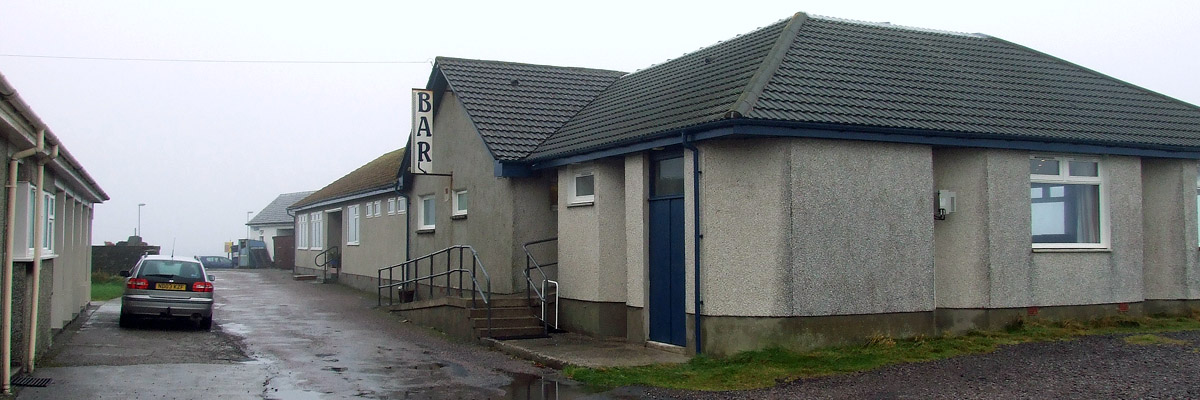 |
Martyrs Bay Restaurant & Bar
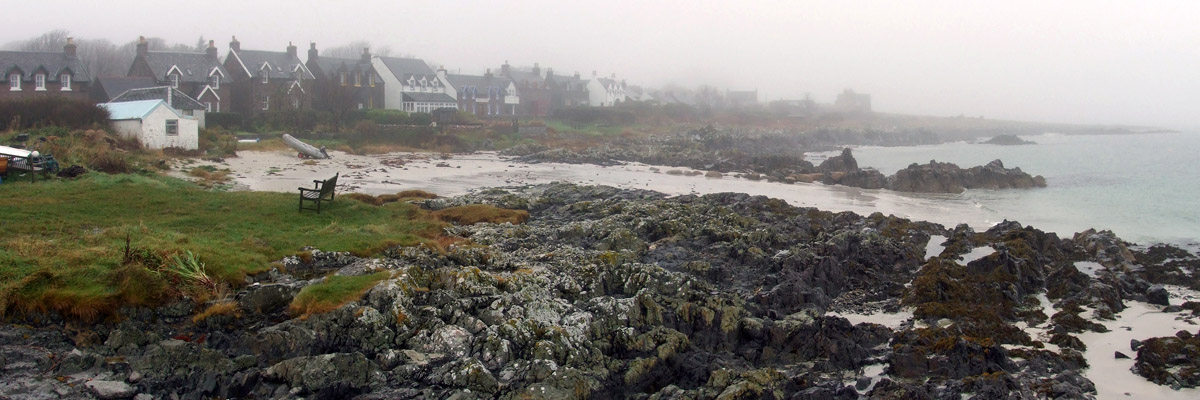 |
Baile MÚr
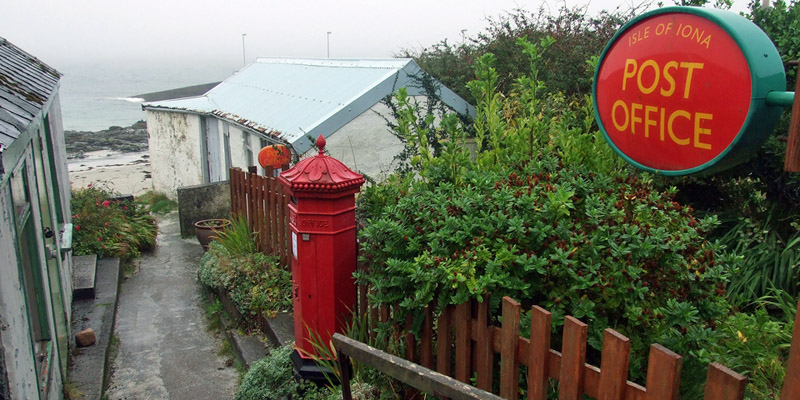 |
Post Office
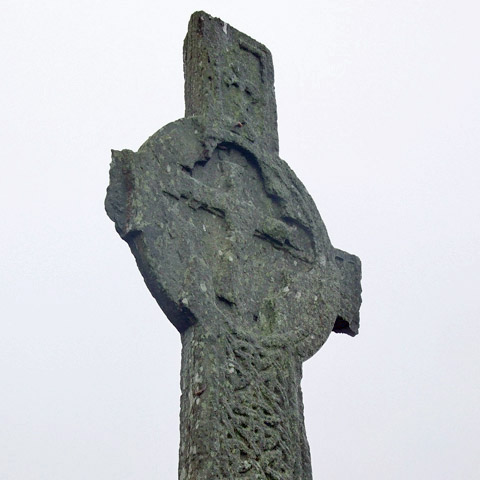 |
MacLean's Cross
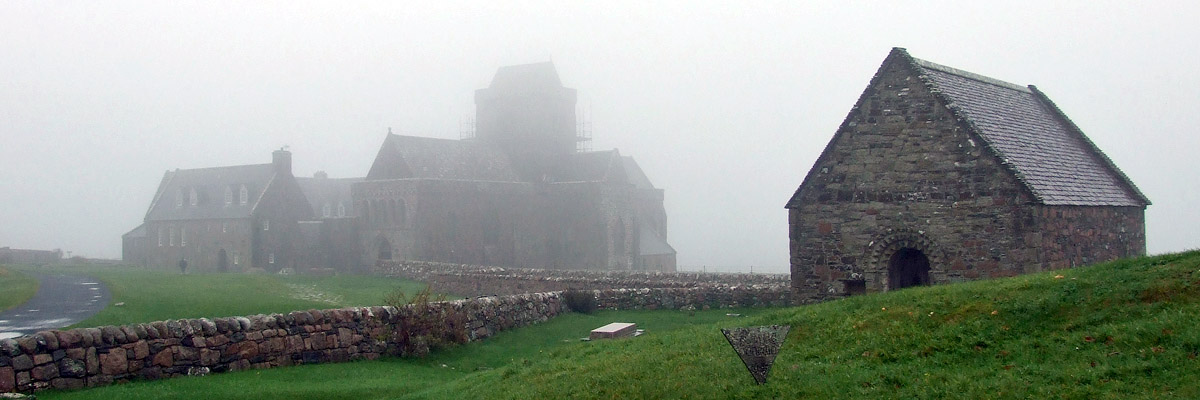 |
Iona Abbey and St Oran's Chapel
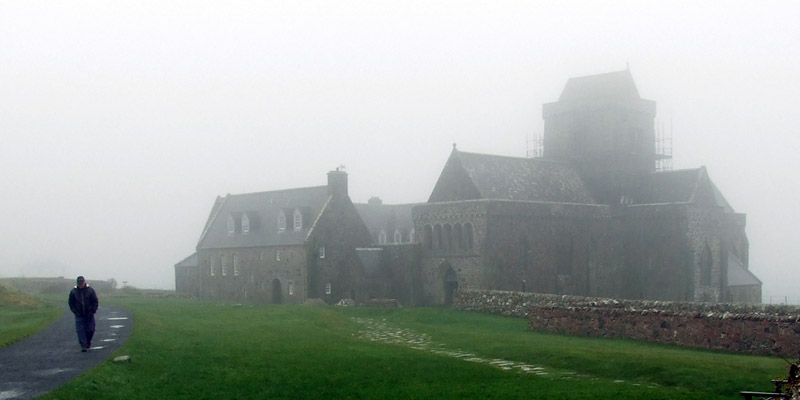 |
Abbey
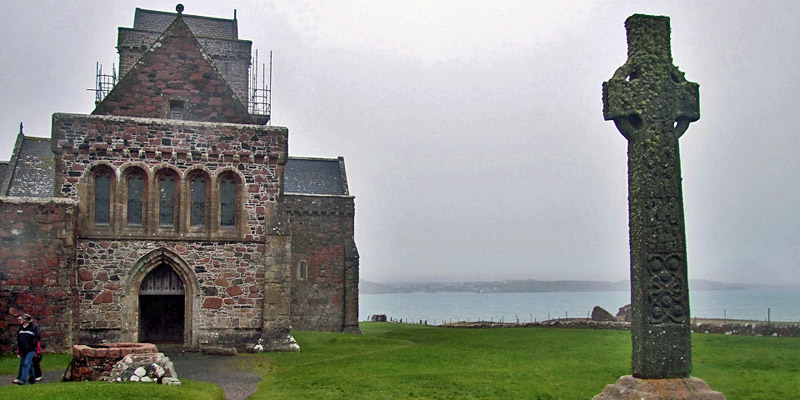 |
St Martinís Cross
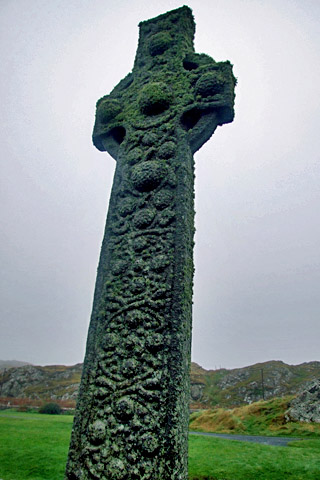 |
St Martinís Cross
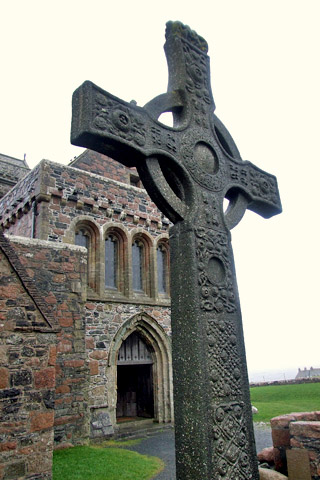 |
St Johnís Cross (replica)
 |
Cloisters
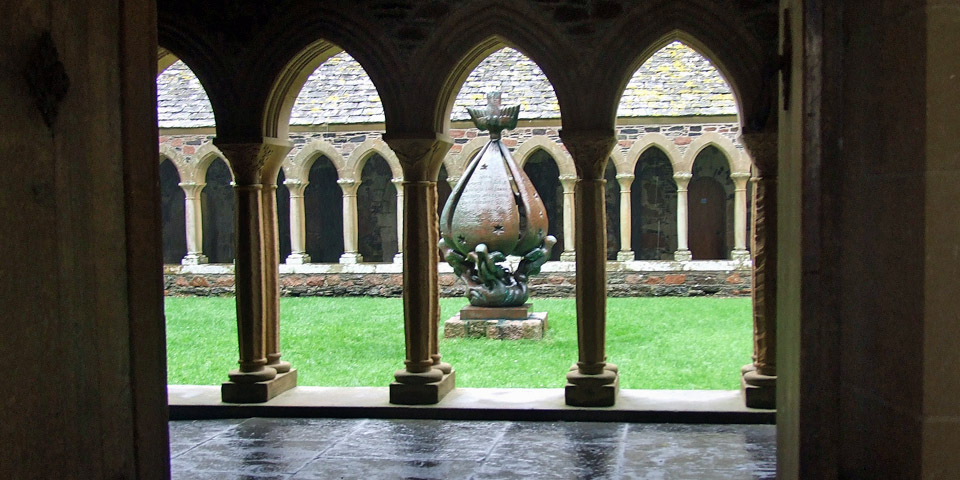 |
Descent of the Spirit
 |
Abbey Church
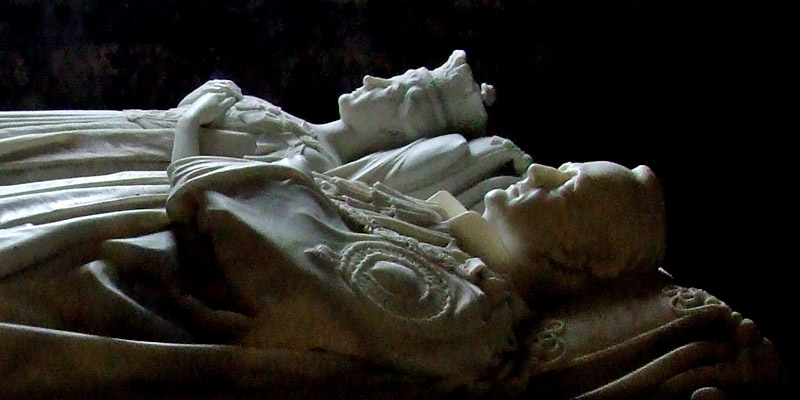 |
8th Duke of Argyll
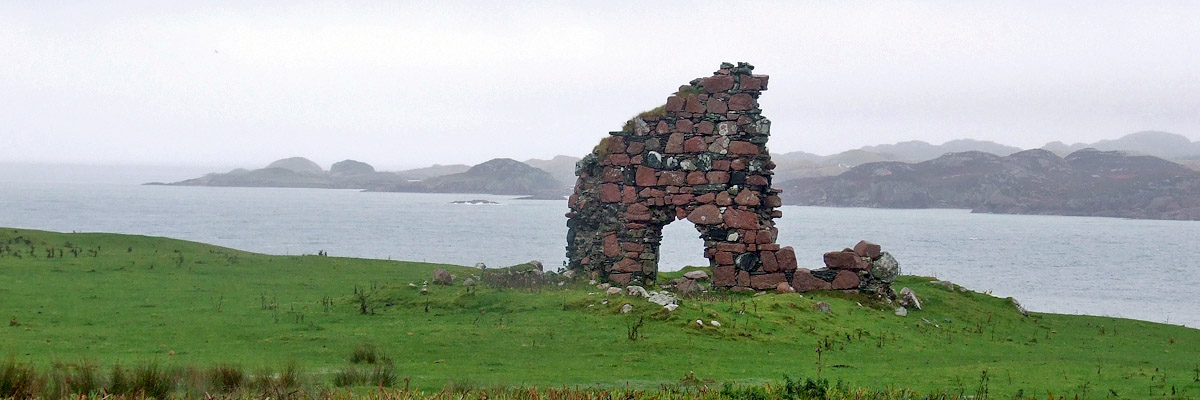 |
Bishop's House
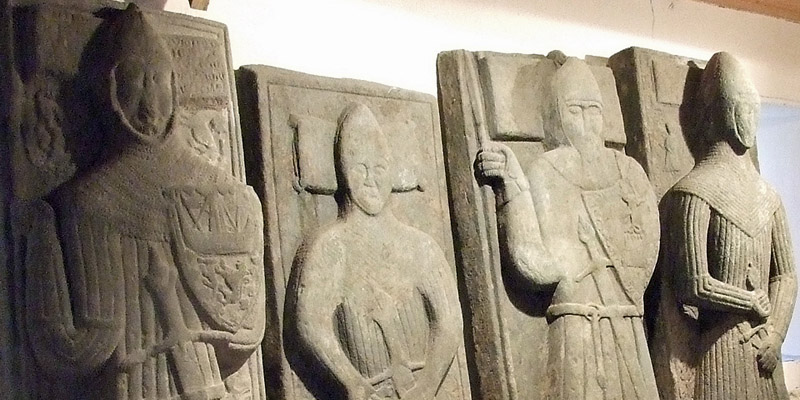 |
Graveslabs
 |
St Oran's Cross
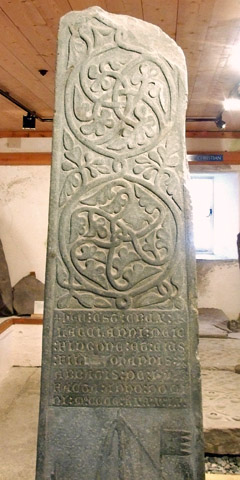 |
Cross Shaft
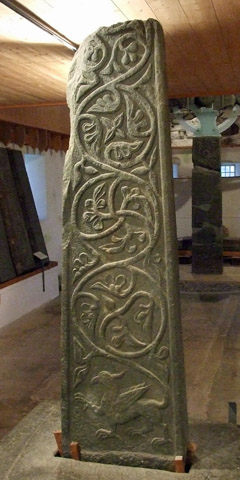 |
Cross Shaft
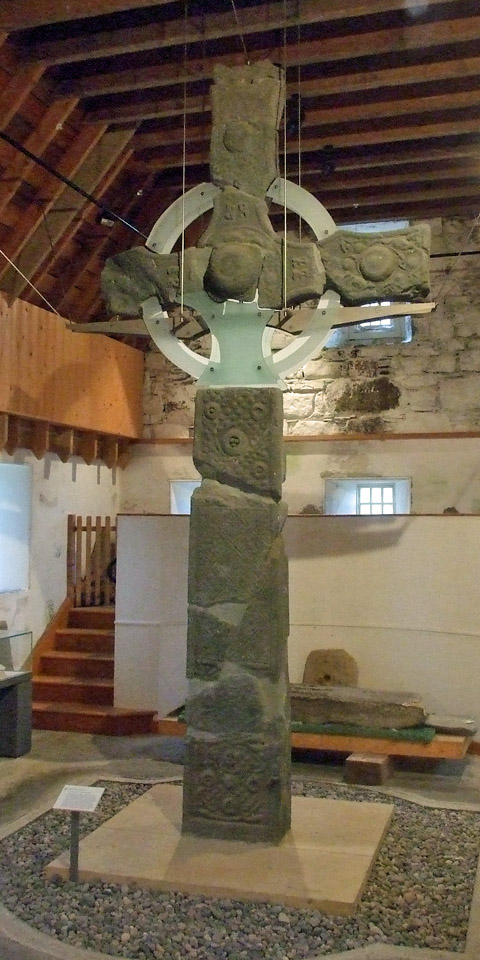 |
St John's Cross
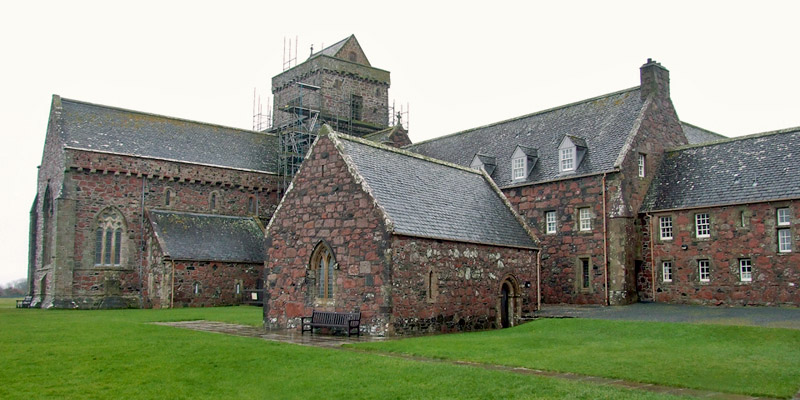 |
Abbey
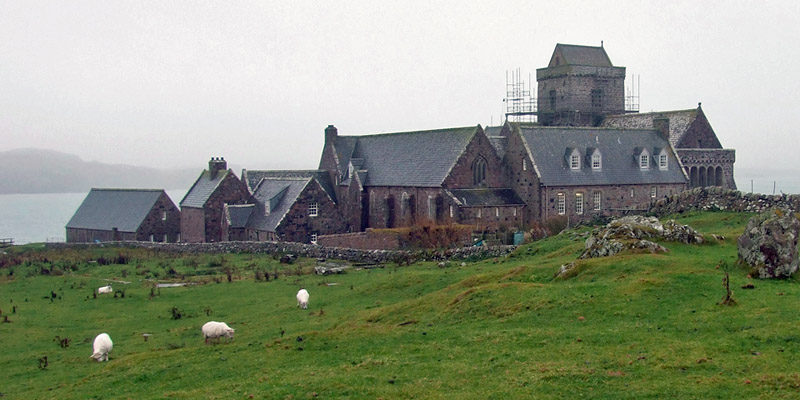 |
Abbey
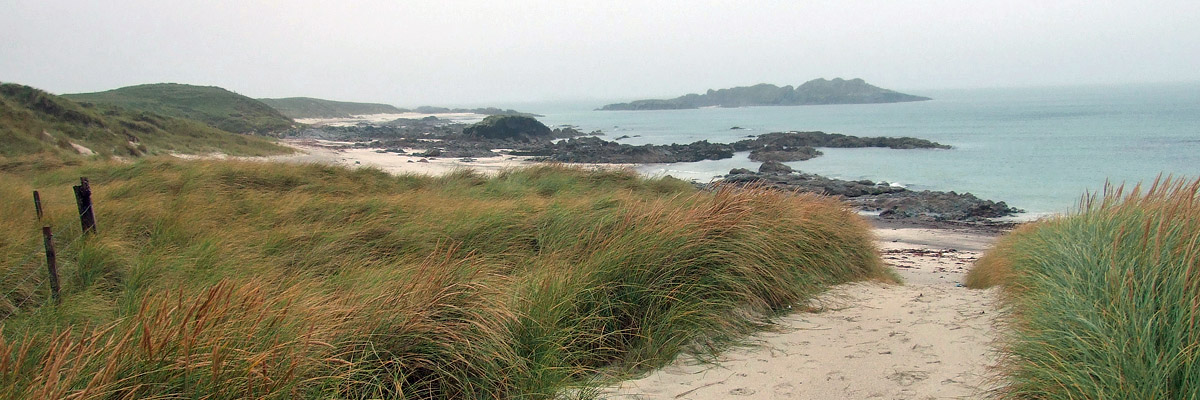 |
North Beach
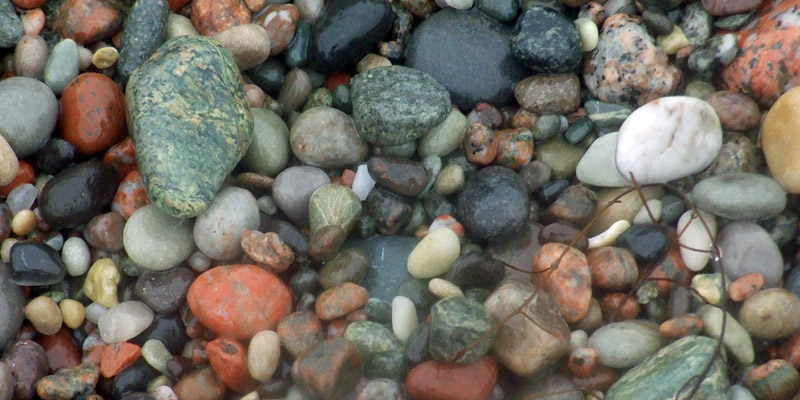 |
North Beach
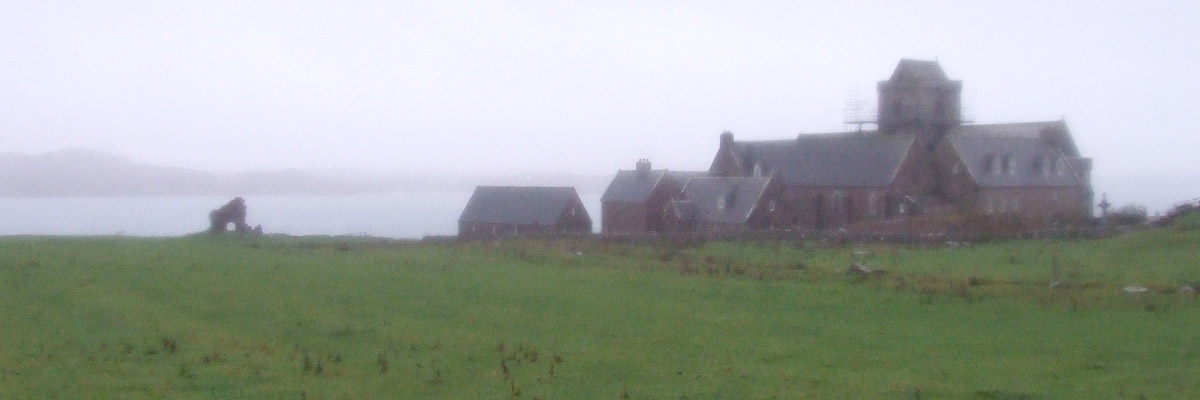 |
Abbey
 |
Nunnery
 |
Nunnery
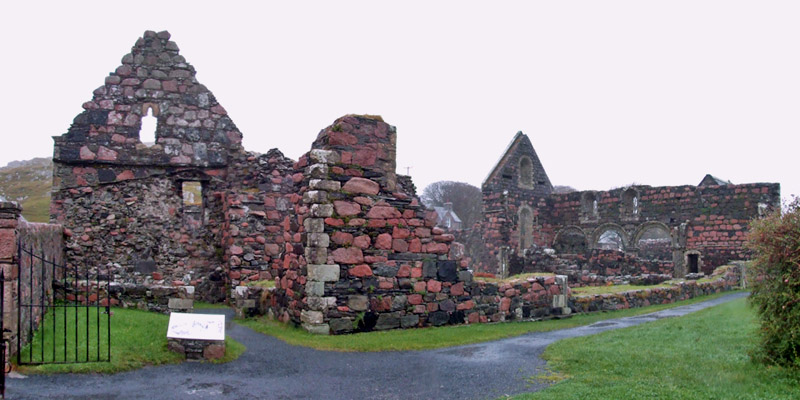 |
Nunnery
Next
| September | /October/ | November |
| S | M | T | W | T | F | S |
| 27 | 28 | 29 | 30 | 1 | 2 | |
| 3 | 4 | 5 | 6 | 7 | 8 | 9 |
| 10 | 11 | 12 | 13 | 14 | 15 | 16 |
| 17 | 18 | 19 | 20 | 21 | 22 | 23 |
| 24 | 25 | 26 | 27 | 28 | 29 | 30 |
| 31 | 1 |
The North Atlantic Arc Home
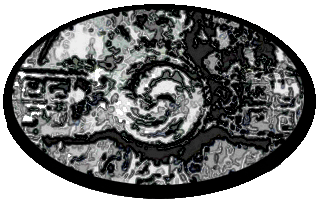
Mr Tattie Heid's Mileage
Results may vary